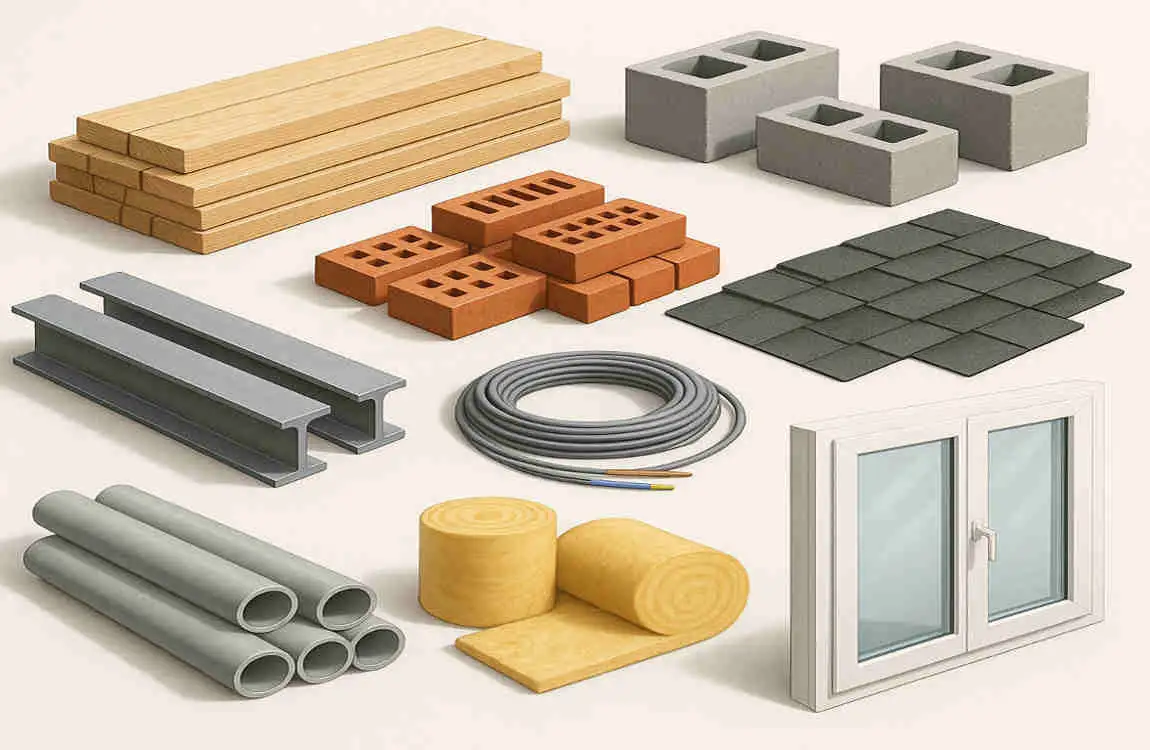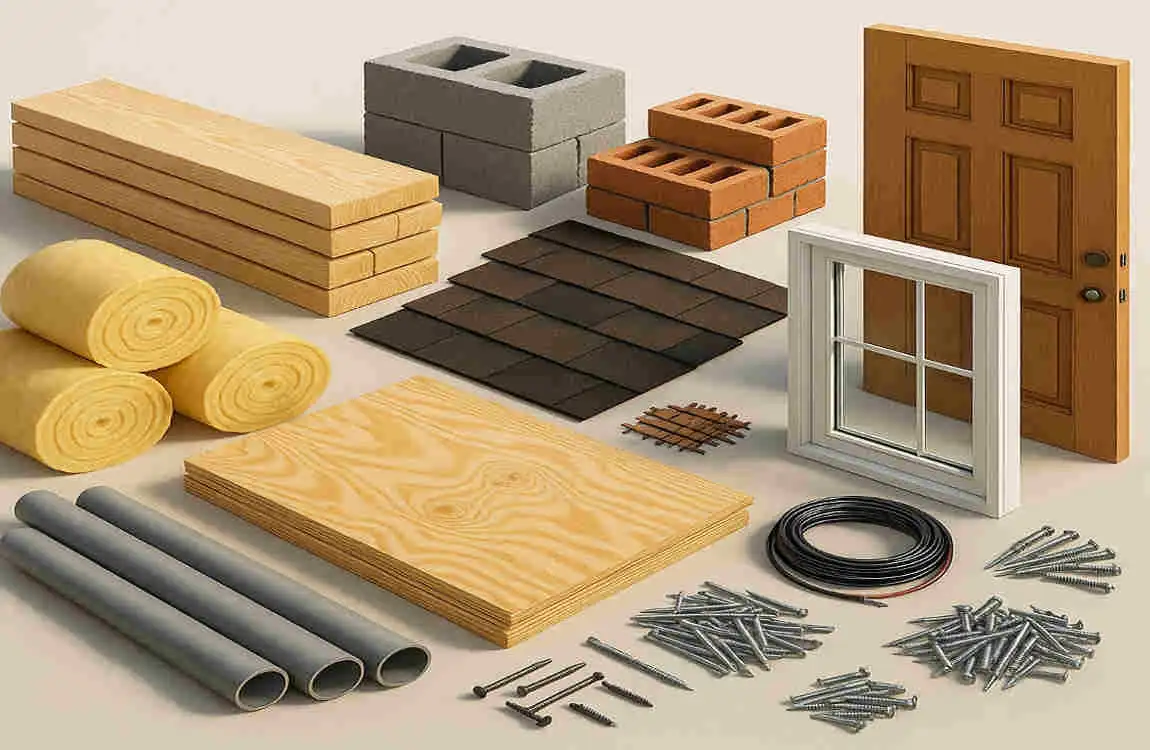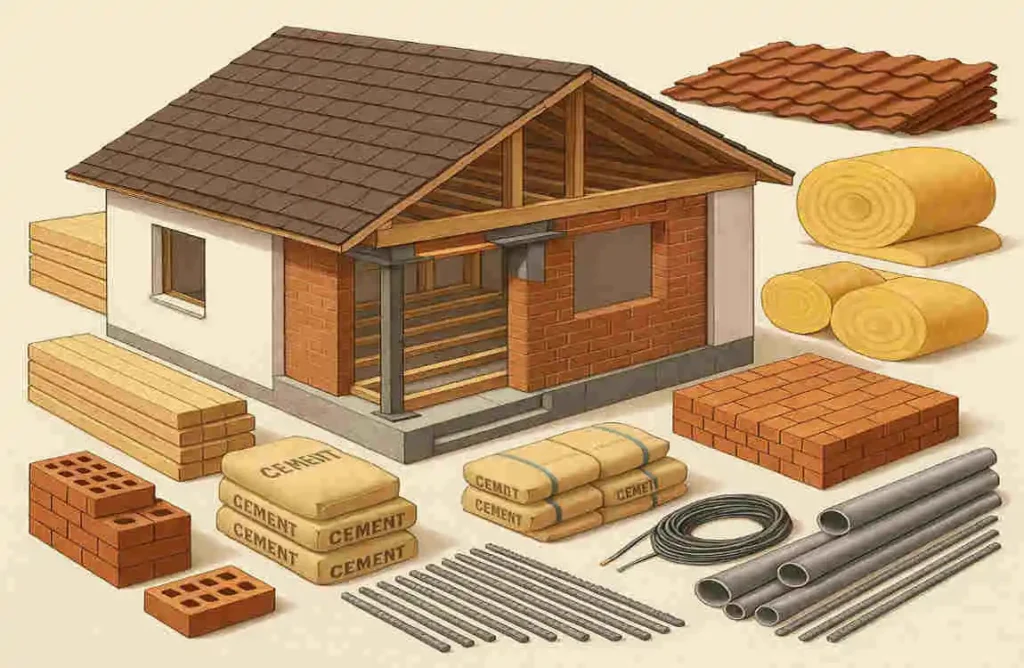Building your dream home is one of the most exciting and rewarding experiences in life. It’s a journey that involves creativity, planning, and, most importantly, choosing the right materials.
When it comes to building a house, the materials you choose are the foundation of your dream. They influence everything—structural integrity, aesthetics, energy efficiency, and even the long-term maintenance of your home. Selecting the right materials isn’t just about picking what looks good; it’s about finding the perfect balance between functionality, durability, and cost.
Understanding the Basics: Why Choosing the Right Materials Matters

Before we delve into the specifics, let’s discuss why material selection is crucial. Here are some key reasons:
Structural Integrity and Safety
The materials you choose directly impact the strength and safety of your home. High-quality materials ensure your house can withstand natural forces, including wind, rain, and earthquakes.
Longevity and Maintenance
Durable materials reduce the need for frequent repairs and replacements, saving you money and hassle in the long run. For example, using reinforced concrete for your foundation can prevent cracks and structural issues.
Energy Efficiency
Energy-efficient materials, such as insulated walls and double-glazed windows, help regulate indoor temperatures. This not only reduces your energy bills but also makes your home more environmentally friendly.
Cost and Timeline
While some materials may have a higher upfront cost, they often pay off in the long run by reducing maintenance and energy expenses. Additionally, selecting readily available materials can expedite the construction process.
Aesthetic Appeal
Materials like wood, stone, and glass can enhance the beauty of your home, giving it a unique character. The right materials can bring your architectural vision to life.
Core Structural Materials Needed to Build a House
The foundation of any home lies in its structural materials. These materials form the backbone of your house, ensuring it’s strong, stable, and built to last.
Cement and Concrete
Cement and concrete are the most widely used materials in the construction industry. They’re essential for creating strong foundations, walls, and floors.
- Definition and Role: Cement is a binding material, while concrete is a mixture of cement, sand, gravel, and water. Together, they form the base of most structures.
- Uses: Foundations, floors, walls, and structural supports.
- Types: Ready-mix concrete, reinforced concrete, and eco-friendly options, such as green concrete.
- Benefits: High strength, durability, and fire resistance. Modern eco-friendly concrete options also reduce carbon emissions.
Bricks and Concrete Blocks
Bricks and blocks are classic building materials that have stood the test of time.
- Composition: Bricks are made from clay, whereas concrete blocks are composed of cement and aggregates.
- Applications: Walls, partitions, and facades.
- Advantages: Thermal insulation, fire resistance, and aesthetic appeal.
- Types: Clay bricks, fly ash bricks, and hollow concrete blocks.
- Cost-Effectiveness: Bricks and blocks are affordable and widely available, making them a popular choice for construction.
Steel and Reinforcement Bars
Steel is a critical component in modern construction, providing the tensile strength needed for reinforced concrete structures.
- Uses: Reinforcement in concrete, framing, and roofing.
- Benefits: High tensile strength, flexibility, and resistance to earthquakes.
- Types: Mild steel, stainless steel, and TMT (Thermo-Mechanically Treated) bars.
Wood
Wood is a versatile material that adds warmth and character to any home.
- Types: Softwood (pine, cedar) and hardwood (oak, teak).
- Uses: Framing, flooring, doors, windows, and furniture.
- Advantages: Natural insulation, ease of work, and aesthetic appeal.
- Considerations: Ensure the wood is treated for durability and pest resistance.
Stone
Natural stone is a timeless material that offers both beauty and durability.
- Varieties: Granite, limestone, marble, and sandstone.
- Applications: Foundations, walls, flooring, and decorative elements.
- Benefits: Weather resistance, durability, and a luxurious appearance.
- Cost: While stone can be expensive, its longevity makes it a worthwhile investment.
Essential Finishing and Functional Materials

Once the structure is complete, it’s time to focus on the finishing touches that make your house a home.
Glass
Glass is a versatile material that enhances natural light and aesthetics.
- Types: Tempered, laminated, and double-glazed glass.
- Uses: Windows, doors, skylights, and partitions.
- Benefits: Energy efficiency, aesthetic appeal, and sound insulation.
Roofing Materials
The roof is your home’s first line of defense against the elements.
- Options: Tiles, shingles, and metal roofing.
- Factors to Consider: Climate, durability, and cost.
- Additional Features: Insulation and waterproofing.
Insulation Materials
Proper insulation is key to a comfortable and energy-efficient home.
- Types: Fiberglass, foam boards, and spray foam.
- Benefits: Reduced energy bills, improved comfort, and soundproofing.
Plumbing and Electrical Supplies
High-quality plumbing and electrical materials ensure safety and functionality.
- Plumbing: Pipes, fittings, and fixtures.
- Electrical: Wiring, switches, and circuit breakers.
- Trends: Eco-friendly plumbing and smart home wiring.
Tiles and Flooring Materials
Flooring sets the tone for your home’s interior design.
- Options: Ceramic, porcelain, wood, and vinyl.
- Considerations: Durability, maintenance, and style.
Sustainable and Innovative Building Materials
As sustainability becomes a priority, many homeowners are turning to eco-friendly materials.
- Examples: Hempcrete, bamboo, recycled steel, and autoclaved aerated concrete (AAC).
- Benefits: Reduced carbon footprint, energy efficiency, and innovative designs.
- Why It Matters: Sustainable materials align with modern values and can even increase property value.
Factors to Consider When Selecting Materials Needed to Build a House
Choosing the right materials involves balancing several factors:
- Budget: Stick to your budget without compromising quality.
- Climate: Select materials suited to your local weather conditions.
- Availability: Opt for materials that are readily available and easily sourced locally.
- Maintenance: Consider long-term upkeep and costs.
- Aesthetics: Ensure the materials align with your design vision.
- Future-Proofing: Choose materials that can adapt to future needs.
Tips for Planning and Procuring Building Materials
Here are some practical tips to streamline the material selection process:
- Work with Professionals: Collaborate with architects and contractors for expert advice.
- Order in Bulk: Save money by purchasing materials in bulk.
- Quality Checks: Verify certifications and inspect materials thoroughly before making a purchase.
- Budget Wisely: Allocate funds for high-priority materials.
- Timing and Storage: Plan deliveries to minimize delays and ensure proper storage conditions.

